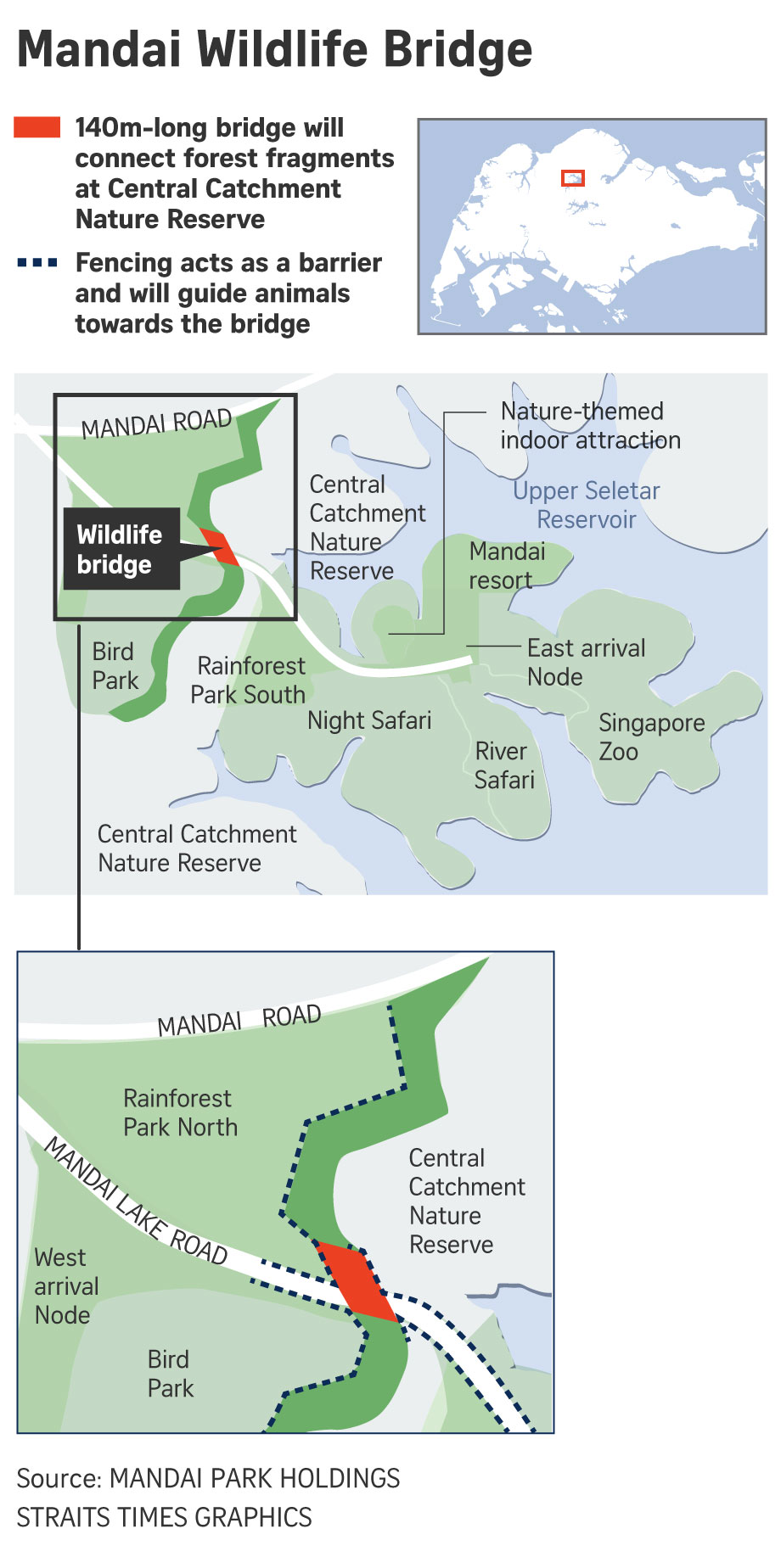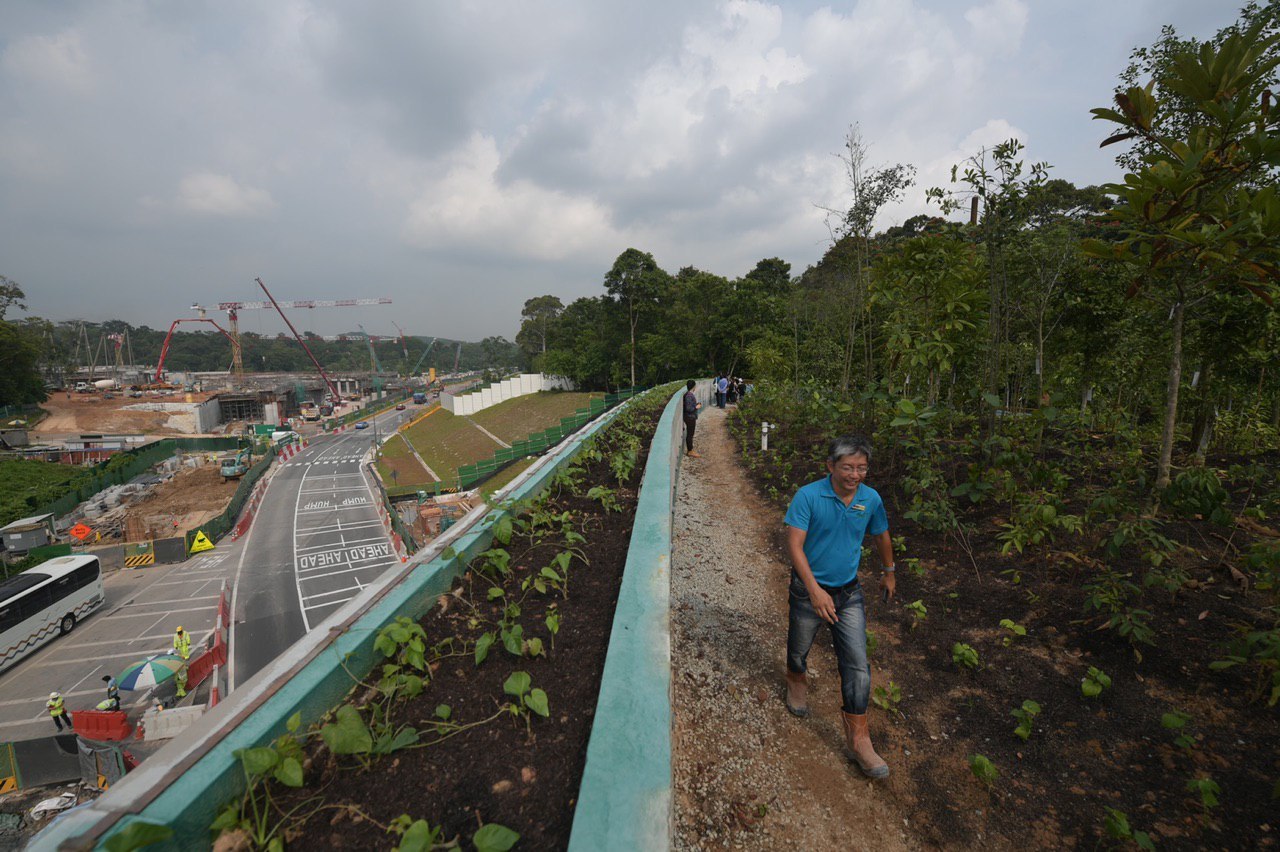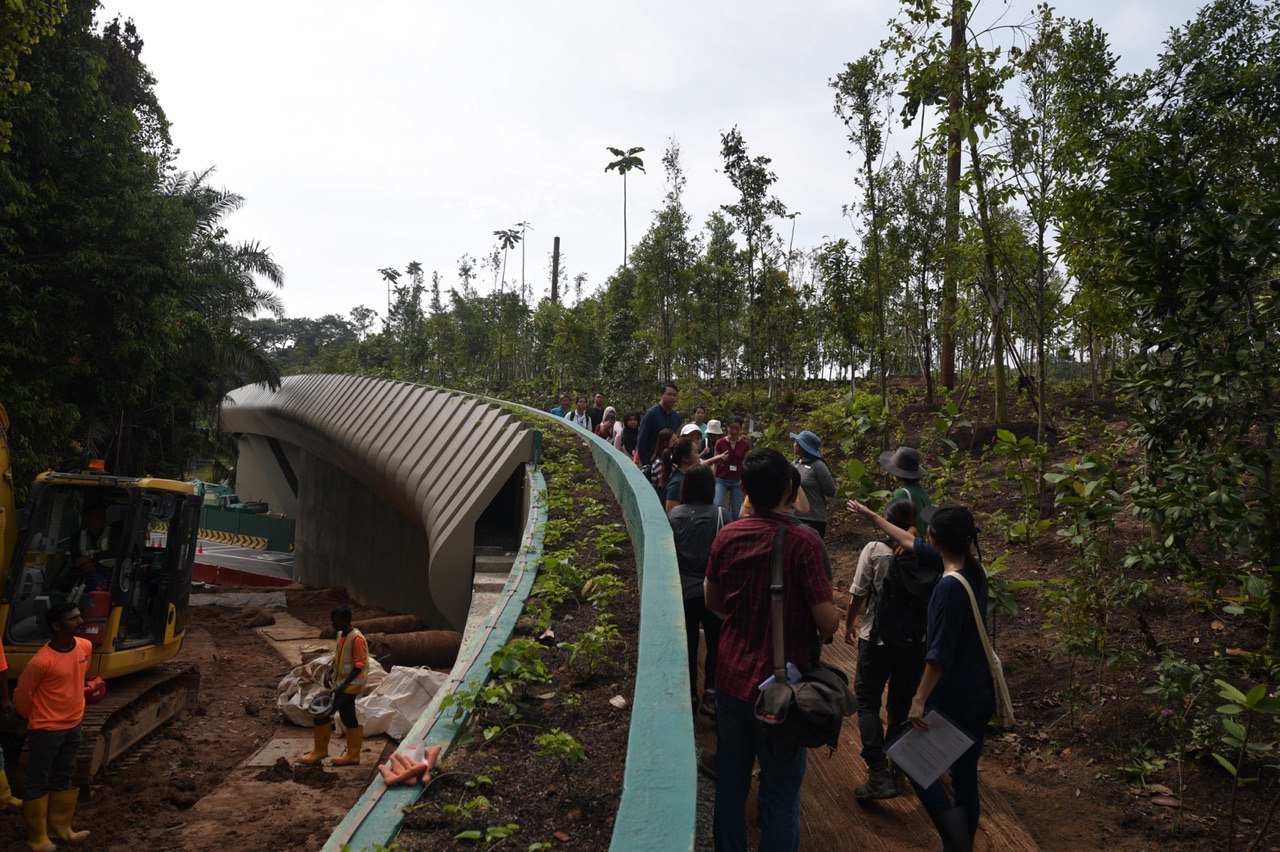Wildlife bridge to help animals safely cross Mandai Lake Road will open in December
Sign up now: Get ST's newsletters delivered to your inbox
Follow topic:
SINGAPORE - Visitors to the zoo may have noticed an "overhead bridge" being built along Mandai Lake Road, but the Mandai Wildlife Bridge is not to be used by humans.
Operational in December this year, it is meant for animals instead, to help them safely move between two slivers of forest on either side of Mandai Lake Road.
Works started in June 2017, and the bridge was officially unveiled by developer Mandai Park Holdings (MPH) on Wednesday morning (Nov 6).
It declined to reveal the cost of the bridge, but said it was a key investment in improving animal connectivity in the area.
Animals faced risks crossing the road, even during construction of the bridge.
In a March 2018 report, The Straits Times highlighted that several rare animals, including a critically endangered pangolin and a leopard cat, were killed by vehicles in the vicinity of the project site.
Spanning the width of Mandai Lake Road, the 140m-long bridge is the latest in a slew of measures that MPH has put in place to reduce the incidence of roadkill while works for a nature precinct of five wildlife parks are under way in the vicinity.
Among the measures are rope bridges installed earlier to help tree-dwelling species cross the road, and visual aids to urge motorists to slow down in the area.
By 2023, a new Rainforest Park and the relocated Bird Park will join the existing trio of attractions there - the Singapore Zoo, Night Safari and River Safari.

The land on which the two new parks will be built is state-owned. Secondary forests have, over the past few decades, regenerated there.
The area also sits immediately outside the ecologically rich Central Catchment Nature Reserve, forming a lush landscape of wildlife.
The wildlife bridge
Native animals - including pangolins, lesser mousedeer and forest-dependent birds such as short-tailed babblers - will be enticed to use the bridge by the native plants planted on it.
Plants of different heights will be used, to help create a forest-like environment on the bridge, which is connected to vegetated areas within the development sites.
These areas make up about 15 per cent of the Mandai development area, and were set aside by the developer to improve connectivity for native wildlife.
These buffer areas are in turn connected to the Central Catchment Nature Reserve, which spans both sides of Mandai Lake Road.
It may take between five and 10 years for the tree canopy on the Mandai Wildlife Bridge to be fully established.

Meanwhile, artificial crossing aids have been installed on the bridge to help tree-dwelling species like colugos cross it, said Dr Lee Hui Mien, vice-president for sustainable solutions at Mandai Park Development (MPD) - MPH's development arm.
She added that the ends of the bridge have been made slightly wider so animals would be funnelled towards it.
Hoardings have also been installed along both sides of Mandai Lake Road to prevent animals from getting to the road, said Dr Lee.
On why the bridge will be made operational only in December, Dr Lee said the bridge will be the first feature to be completed as part of the rejuvenation of the area.
History of controversy
Ever since works for the nature precinct began in early 2017, MPH has come under fire from the nature community, including late wildlife consultant Subaraj Rajathurai, over the incidences of roadkill found along Mandai Lake Road.
Among other animals, The Straits Times understands that five colugos - native nocturnal mammals found only in good forests - have also been found dead along the road since works started.

MPD assistant vice-president for sustainable solutions Chua Yen Kheng said the bridge is not being built in "direct response" to the roadkill incidences, and that many countries also used wildlife bridges to improve connectivity.
The Mandai Wildlife Bridge is not the first of its kind in Singapore. An existing National Parks Board's Eco-Link bridge spans the Bukit Timah Expressway.
Said Ms Chua: "When there is a road cutting through a forest environment, there will be some impact. So if you want to improve connectivity in the area, this is definitely a worthwhile investment."
Professor Peter Ng, head of the National University of Singapore's (NUS) Lee Kong Chian Natural History Museum, said the wildlife bridge had been part of the developer's plans for the area since 2012, following consultations with the nature community and government agencies.
But construction could only begin once development plans for the area were more concrete, said Prof Ng, who is also chair of MPH's Environmental Advisory Panel.
"The roadkill incidence were unfortunate. Could some animals be saved if the bridge had been built earlier? Perhaps the leopard cat, but not the others like the colugo," he said, adding that the bridge is a long-term investment.
"Once the vegetation matures and animals start getting used to it, the bridge would surely help more animals cross the road unimpeded," he said.

